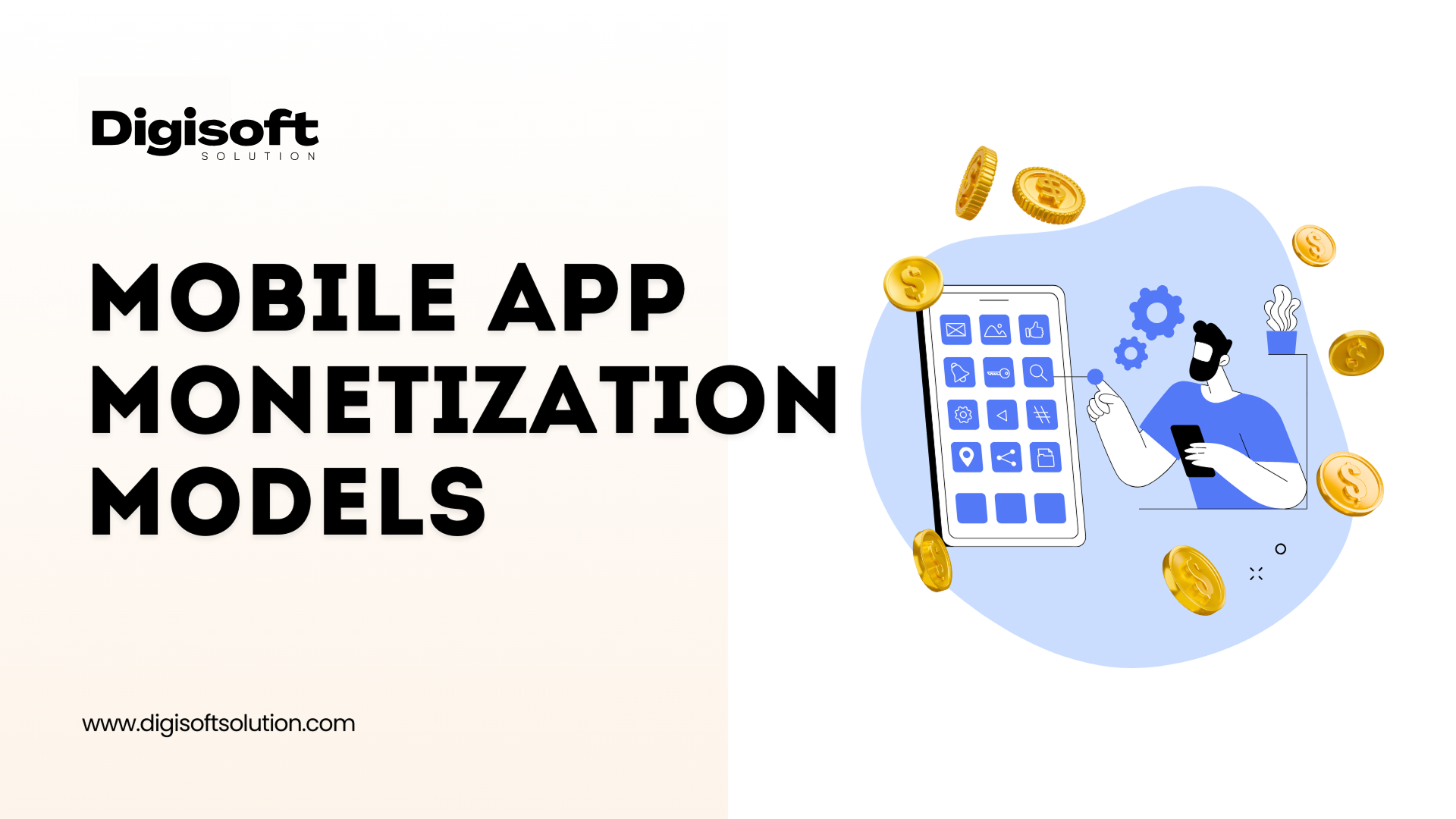Table of Content
- Why Mobile App Monetization Matters
- 1. Freemium Model: Providing Premium Features to Users at No Cost
- Benefits of the Freemium Business Model
- Challenges
- 2. Subscription Model: Guaranteeing Consistent Revenue Sources
- Valuable Advice for Successful Subscriptions:
- 3. Using In-App Advertising to Increase User Engagement
- Kinds of In-App Advertising:
- 4. In-App Purchases: Gaining Access to Products and Features
- In-App Purchase Examples:
- Top Techniques:
- 5. Affiliate Marketing: Creating Partnerships to Increase Revenue
- How to Implement Affiliate Marketing:
- 6. Paid Apps: Charging Upfront for Quality Content
- Things to Take into Account:
- 7. Partnerships and Sponsorships: Joint Revenue Models
- Benefits of Partnerships and Sponsorships
- New Developments in 2025 Mobile App Revenue
- How to Make Money with a Mobile App
- The Best Methods for Successful App Monetization
- Conclusion
Digital Transform with Us
Please feel free to share your thoughts and we can discuss it over a cup of coffee.

Mobile app monetization models are the foundation for developing brilliant ideas into successful business endeavors in the constantly changing world of mobile apps. As app developers and companies prepare for 2025, understanding these strategies is necessary to ensure success in an increasingly competitive market. This guide covers all you need to know, whether you're searching for tried-and-true strategies or creative ways to monetize mobile apps.
These days, mobile apps are vibrant ecosystems rather than merely tools. Developers can generate long-term revenue streams, increase user engagement, and develop immense benefits with the correct mobile app monetization strategy. To stand out in a crowded market, you must select a model that complements the goal and target user base of your app.
Why Mobile App Monetization Matters
The mobile app market will expect to bring more than $935 billion in benefit by 2025. Having a clear monetization approach is now essential, as millions of apps compete for users' attention. Effective mobile app monetization not only sustains your app's operations but also provides resources for continuous improvement and growth.
Selecting the appropriate strategy greatly contributes to the success of an application. The table below presents various monetization models for mobile apps, summarizing their advantages, challenges, and examples for quick reference.
| Monetization Model | Benefits | Challenges | Examples/ Techniques |
| Freemium Model | Low entry barrier, high revenue potential | Requires strong free offering, conversion varies | Spotify, Duolingo |
| Subscription Model | Steady income, boosts retention | Needs regular updates, tiered pricing | Netflix, fitness apps |
| In-App Advertising | Monetizes without user charges | Balance ad frequency, avoid annoyance | Banner, Interstitial, Rewarded, Native Ads |
| In-App Purchases | Direct revenue, enhances experience | Secure payments, continuous new items | Gaming currency, photo filters, premium content |
| Affiliate Marketing | Extra revenue, leverages partnerships | Align with audience, avoid user overload | Partner with brands, use tracking tools |
| Paid Apps | Immediate revenue | Requires high quality, strong marketing | Competitive pricing, emphasize app value |
| Partnerships & Sponsorships | Significant revenue, builds credibility | Align with app, maintain user experience | Sponsored content, exclusive offers |
Let’s explain in detail:
1. Freemium Model: Providing Premium Features to Users at No Cost
One of the best methods for making money off of mobile apps is still the freemium model. Spotify and Duolingo are two examples of apps that provide free basic services but charge for premium features like ad-free experiences, access to unique content, or improved functionality. This strategy increases the likelihood that consumers will become paying clients by letting them test your app risk-free.
Benefits of the Freemium Business Model
- low entrance barrier for users.
- A chance to highlight the benefits of your application.
- high potential for revenue growth.
Challenges
- Needs a substantial free offering in order to draw users.
- Rates of conversion to premium can differ significantly.
2. Subscription Model: Guaranteeing Consistent Revenue Sources
Users that choose the subscription model pay a regular price to use your app's features. This model performs remarkably well for content-based apps such as Netflix or fitness apps offering guided workouts. This approach improves user retention and guarantees an ongoing source of income by providing consistent value.
Valuable Advice for Successful Subscriptions:
- Provide a range of access levels to accommodate varying user requirements.
- To encourage users to try out the app's premium features, provide a free trial.
- Update content frequently to keep users interested.
3. Using In-App Advertising to Increase User Engagement
Within-app advertising is now a common way of bringing revenue through mobile devices and not charging the end consumer. Depending on how the application is designed and the audience, advertisements can be interactive content, videos, or banners. A balance between ad frequency and user experience is necessary for maximizing the effectiveness of this strategy.
Kinds of In-App Advertising:
- Banner Ads: They are simple and inconspicuous at the peak or bottom of the screen.
- Interstitial Ads: Full-screen ad campaigns that show up during organic pauses in app usage are known as interstitial adverts.
- Rewarded Video Ads: Use these particular ads to provide in-app rewards to viewers.
- Native Ads: For a less annoying experience, they are fully integrated into the app's content.
4. In-App Purchases: Gaining Access to Products and Features
In-app purchases allow users to pay for additional services or content across various programs. These include e-commerce websites offering exclusive discounts and gaming apps selling virtual goods. By using this strategy, you can profit from users of mobile apps who are willing to pay to increase their experience.
In-App Purchase Examples:
- Apps for gaming use virtual money.
- Picture apps with unique filters or editing features.
- Access to courses or premium content in educational applications.
Top Techniques:
- Emphasize the benefits of in-app purchases.
- Make sure the payment process is safe and easy.
- Introduce new products or features frequently to maintain user interest.
5. Affiliate Marketing: Creating Partnerships to Increase Revenue
Affiliate marketing makes use of alliances to make money. You can get paid for successful transactions by including affiliate links or making recommendations for goods in your app. Digital marketing approach is especially effective for specific programs with a loyal user base.
How to Implement Affiliate Marketing:
- Partner with firms that complement the audience and concept of your app.
- Track affiliate performance with tracking tools.
- Don't overload users with too many offers.
6. Paid Apps: Charging Upfront for Quality Content
Charging customers upfront for app downloads is less frequent in today's freemium market, but it might still work if your software provides a distinct value. Make sure that the reviews and description of your app highlight its advantages in order to support its price.
Things to Take into Account:
- Excellent app functionality and design are crucial.
- A strong marketing plan is required to increase downloads.
- Set an acceptable cost according to industry norms.
7. Partnerships and Sponsorships: Joint Revenue Models
Sponsorships comprise collaborating with companies or groups to advertise their goods or services inside your app. This can include Collaborated content, special offers, and sponsored features.
Benefits of Partnerships and Sponsorships
- Generates a substantial profit without affecting the user experience.
- Strengthens your app’s trust status through reputable partnerships.
New Developments in 2025 Mobile App Revenue
Opportunities for monetization change along with technology. Keep an eye on the following trends:
- AI-Driven Personalization: Making use of AI to provide specific recommendations and advertisements.
- Blockchain-Based Payments: Providing transparent and safe ways to make payments.
- Integrating AR and VR: Making money off of immersive experiences in apps for AR and VR.
How to Make Money with a Mobile App
Choosing a model is only one step in the process of successfully monetizing mobile apps. It needs
- User-Centric Design: Make sure your revenue-generating strategies suit the requirements and inclinations of your users.
- Data-Driven Decisions: To better understand user behavior and improve your methods, employ analytics.
- Continuous Optimization: To optimize revenue, test and tweak your monetization strategies on a regular basis.
The Best Methods for Successful App Monetization
Choosing a revenue model alone is not enough to create an effective monetization plan. The following crucial best practices will help you in improving your strategy and guaranteeing sustained profitability:
- Identify your target market: Adapt your monetization plan to the preferences and habits of your users. In order to match your services with the things that your audience values most, conduct market research, examine user demographics, and collect feedback.
- Prioritize the user experience: It's really crucial to make money out of your app, but as much as that, ensuring a smooth and delightful experience for the user. There are too many churning factors in overcrowding ads and sales pitches inside the apps.
- Diversify your sources of income: This is dangerous because a single monetization model might not be enough. Instead, to have a strong and sustainable revenue structure, consider having many strategies, such as advertising and in-app purchases.
- Leverage Data Analytics: Use analytics equipment to track profit performance, retention rates, and user engagement. Using data-driven insights, you will be able to know what is working and where to concentrate your optimization efforts.
- Frequently analyze and enhance: Continuously test different forms of ad placement, subscriptions, or in-app purchasing. With the use of A/B testing, you might be able to improve your techniques and possibly boost returns.
- Provide a value-based incentive: Offer value-driven incentives, such as free trials, discounts, or access to unique content, to encourage user engagement and loyalty. These may convert free users into paying clients.
- Keep updated on market developments: Fast technological advancement and user preferences are shaping monetization strategies in the app sector. To stay ahead of the curve, keep pace with new innovations such as blockchain payments and AI-powered personalization.
- Put Security and Trust First: Ensure that the transactions in your app are visible and secure. By following data privacy laws and keeping monetization methods transparent, you may gain the trust of users.
Follow these best practices to create a balanced and the best approach toward web development, which drives revenue without sacrificing user satisfaction.
Conclusion
Mastering the mobile app monetization models is the need of the hour for app developers and businesses to succeed in 2025. Be it free services, subscriptions, or innovative hybrid models, it all depends on understanding the audience and delivering value. Further simplification can be achieved by partnering with the right experts, such as Digisoft Solutions, making sure that your app is not only different but also sustainable in terms of profitability.
Digital Transform with Us
Please feel free to share your thoughts and we can discuss it over a cup of coffee.
 Parampreet Singh
Parampreet Singh








 Kapil Sharma
Kapil Sharma



















































































































